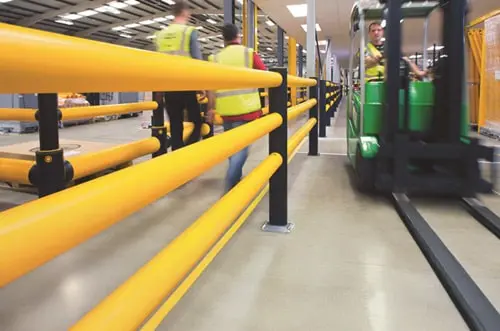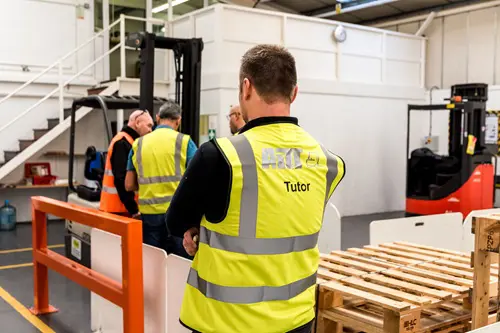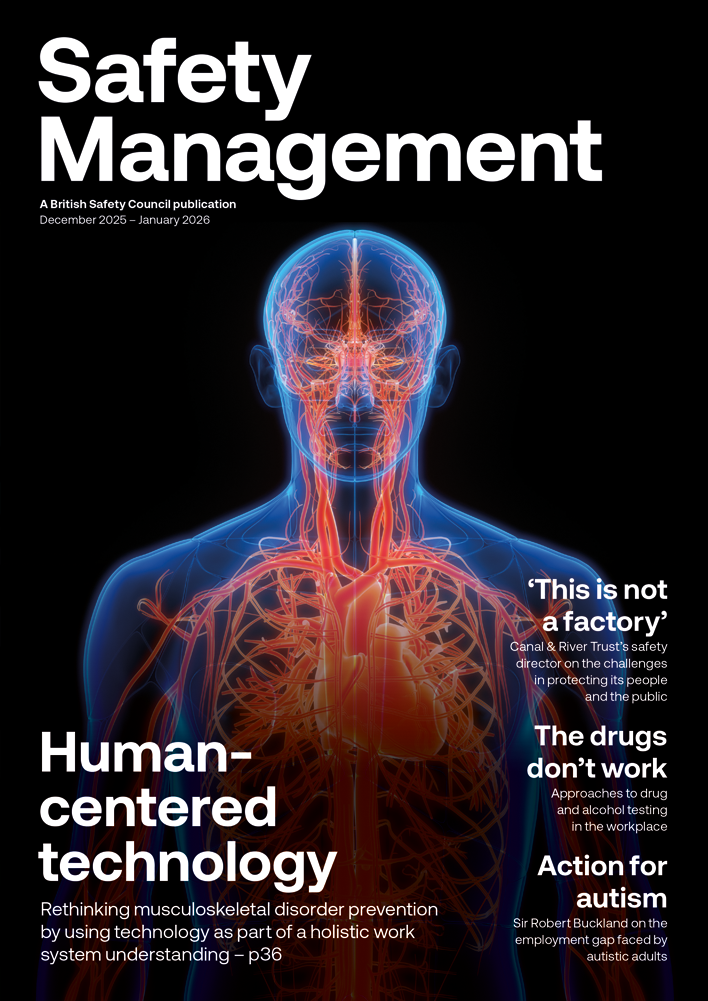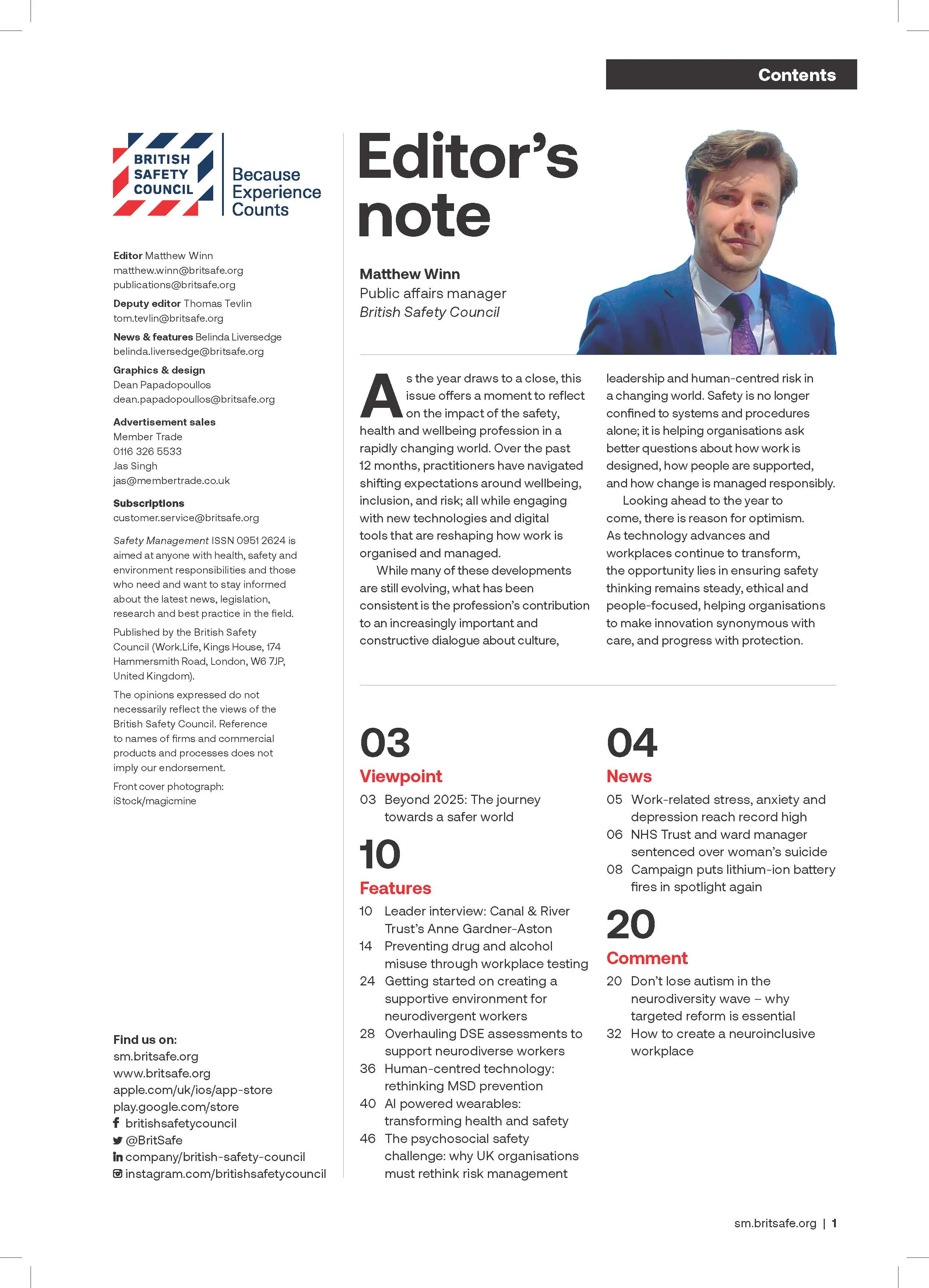New technologies, and the data generated by them, can make a big difference to cutting risks associated with drivers’ performance.
Features
How better use of driver data can cut risks and save lives
With around a third of road deaths and serious injuries typically attributed to work-related activity each year, organisations have a clear responsibility to protect employees and the general public when they are driving. However, too many are still overlooking the risks associated with driving – often concentrating on other aspects of health and safety despite it being the foremost occupational hazard.
Fleet risk management has progressed in recent years and continues to develop with the greater use of technology. In-vehicle systems – including vehicle tracking, AI vehicle cameras, driver behaviour monitoring and advanced driver-assisted systems (ADAS) – are making it possible to capture vital information about driver performance to provide immediate engagement and a greater understanding of risk.
 Nigel Lawrence: "New technologies, and the data generated by them, can make a big difference to cutting risks associated with drivers’ performance."
Nigel Lawrence: "New technologies, and the data generated by them, can make a big difference to cutting risks associated with drivers’ performance."
However, the unprecedented levels of real-time and historical fleet data now available do not necessarily translate to useable knowledge and insight. All too often, organisations can become overwhelmed by the amount of data they have and struggle to know what to do with it. Ultimately, the aim is to understand why fleet risk is occurring and have processes in place to mitigate and reduce the potential impact. In doing so, it consolidates, analyses and demonstrates the flexibility to adapt.
The introduction and adoption of technology supports greater scale and scope, especially for larger fleets where fragmented processes make it harder to consolidate everything into something that is consistent and robust. This has resulted in more complex risk modelling and proactive step-taking that provide support in the right places. In fact, an organisation can deliver an appropriate level of training to the people who need it the most, by using technology to identify and assess the risks.
There is now an opportunity to bring together available data through a single system to gain an even greater understanding. This could help determine how safe an organisation is, who is most at risk, how various parts of an operation compare, and what the latest trends are. By using the data, it is possible to make targeted interventions based on this added understanding.
Driver engagement
Technology is enabling organisations to create safety management systems by engaging with drivers using real-time and historical driving data. By providing drivers with useful feedback based on their individual performance, it becomes possible to develop a responsible driving culture and eliminate risky driving behaviours. Such a messaging strategy communicates targeted updates, bulletins and online training requests if further escalation is required. There are many people working in organisations who are not classified as drivers, and yet spend more time driving than anything else. Photograph: iStock
There are many people working in organisations who are not classified as drivers, and yet spend more time driving than anything else. Photograph: iStock
The objective is not simply about changing behaviour, but attitude, by frequently reinforcing safety messages and treating drivers as individuals with unique needs. This can be supported by introducing a competitive element, which provides drivers with individual scores that can be viewed alongside company and peer group averages. The gamification of what can often be viewed as an onerous or needless task can motivate change. It can also be linked to an incentive scheme that rewards the most improved drivers.
With advances in AI and app technology, it is now possible to take a driver-centric and supportive approach to revolutionise fleet risk management, providing useful performance feedback along with integrated tools that encourage improvement. By identifying at-risk driving events such as harsh braking, rapid acceleration, contextual speeding and phone handling, it becomes possible to generate actionable information and undertake a targeted approach.
Targeted training
Following the Covid-19 pandemic, fleets had to accept they could not do things the same way as they did previously. However, the appetite for driver training did not diminish as organisations attempted to maintain momentum in managing driving risks, so the focus became about achieving as close as possible results through virtual delivery.
The pandemic certainly opened new possibilities for driver training and has shown that virtual delivery can be effective. Online workshops proved to work especially well when interactive, and the number of attendees limited. In fact, this approach is often more convenient than something face-to-face; saving time, money and emissions. This is also a better option from a risk perspective, due to the reduction in work-related travel. When you are delivering a training session on risk and how to reduce it, the safety of attendees should always be considered.
Delivering driver training in a virtual setting may create numerous challenges and considerations. How do you keep it dynamic? How do you maintain engagement? How do you overcome a lack of IT competency? How do you factor in potential home distractions?
Something that was very apparent for optional participation sessions during the pandemic, was the gradual drop-off in attendance levels as people became increasingly tired of virtual meetings.
This suggests that a balance is needed moving forward between remote and in-person activity to maintain interest and achieve the best results.
Since organisations started to rediscover face-to-face training, there has been a renewed interest in virtual reality (VR) technology which offers a viable alternative to other types of driver training. This option is a far more immersive experience than other online training, and easier to deliver in comparison with in-vehicle or classroom activities.
 Behind-the-wheel training can be costly and time-consuming, which can potentially impact operational activities. Photograph: iStock
Behind-the-wheel training can be costly and time-consuming, which can potentially impact operational activities. Photograph: iStock
Effective driver training needs to be flexible, reaching everyone who requires it, and VR adds another layer to these existing delivery methods. Behind-the-wheel training can be costly and time-consuming, which can potentially impact operational activities. Therefore, having a portable, affordable and adaptable option offers tangible benefits to any strategy.
Technology-enabled strategy
Technology has a significant role to play in improving road safety, but there will always be a human element to any effective strategy. This is about using the latest innovations to empower internal fleet and HR teams, so they can best manage risk to achieve a strong internal safety culture. It is also worth bearing in mind that fleet risk is a constant moving target, so any strategy needs to have strong stakeholder buy-in and be agile enough to react to changes in legislation, as well as the size, make-up and focus of an organisation.
There are many people working in organisations who are not classified as drivers, and yet spend more time driving than anything else. These valued staff need encouragement and empathy to change their mindset, which can reduce fleet risk and ultimately save lives.
For more information see: applieddriving.co.uk
Nigel Lawrence is a Director at Applied Driving Techniques
FEATURES

Underpinning safety training with neuroscience for long lasting impact
By SSE Active Training Team (ATT) on 30 November 2025
A behavioural safety training programme developed by Active Training Team for energy provider SSE has been carefully designed with neuroscientific principles in mind – resulting in a prestigious industry award for Best Training Initiative in 2024.

Why a painted line will never be enough
By UK Material Handling Association (UKMHA) on 20 November 2025
Businesses that operate material handling equipment like forklifts are being urged to submit accident and near miss details to a new confidential reporting portal so the industry can identify what needs to be done to improve safety standards.

Why workplace transport training is changing in 2026 and what it means for employers
By AITT on 26 November 2025
New workplace transport training categories due in January mean it is essential to ensure operators of material handling equipment have the necessary training for the exact type of machine they use, and accredited training providers are an ideal source of advice and conversion training.



